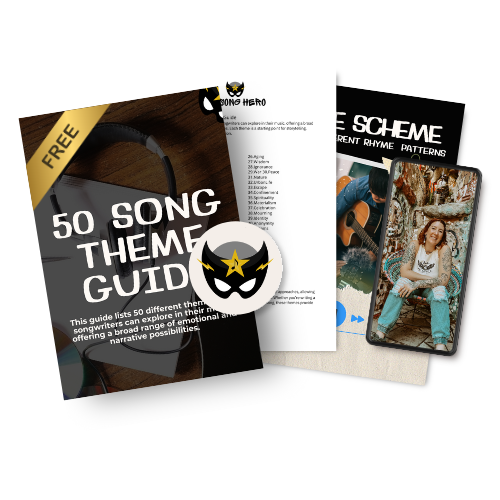10 Essential Melody Writing Tips for Aspiring Songwriters
10 Essential Melody Writing Tips for Aspiring Songwriters by
Hit Song Hero
When it comes to crafting a song that resonates with listeners, melody is king. A strong, memorable melody can be the hook that keeps people humming your song long after it’s over. But creating that perfect melody isn’t always easy. For aspiring songwriters, melody writing can feel like a daunting task. Fear not! With a few essential tips and techniques, you can master the art of melody writing and take your songs to the next level.
Here are ten practical tips to help you write compelling, unforgettable melodies.
1. Get Comfortable with Scales and Modes
At the heart of every melody is the scale. A basic understanding of major and minor scales is essential, but to add more emotional depth and variety to your melodies, experiment with different modes like Dorian, Phrygian, or Mixolydian. Each mode has its own unique vibe: for example, Dorian has a brighter minor feel, while Mixolydian offers a bluesy sound. By playing around with these, you can craft melodies that stand out.
Pro Tip: Try writing a melody using the same notes in different modes to see how it changes the mood of your song.
2. Use Repetition to Create Catchiness
Repetition is one of the simplest yet most powerful tools for melody writing. A great melody often includes repeated phrases or motifs that listeners can latch onto. Think about how often you hear a melodic phrase repeated in a chorus. This repetition allows your audience to familiarize themselves with the melody, making it more likely to stick in their minds.
However, too much repetition can become monotonous. Balance it with variations (more on that below) to keep things interesting.
3. Master the Art of Variation
While repetition creates familiarity, variation prevents predictability. Introduce subtle changes in rhythm, pitch, or phrasing to keep the listener engaged. One way to do this is by modifying a phrase in a new section of the song. You could change the rhythm of a repeated melody or tweak the note pattern slightly in the verse and chorus.
Exercise: Take a short melodic phrase and write three variations of it, altering only one aspect like pitch, rhythm, or interval.
4. Match the Melody to the Emotional Tone of the Lyrics
The most memorable songs marry melody with emotion. Before you begin writing your melody, ask yourself what the emotional core of your song is. Is it sad, happy, uplifting, or contemplative? The emotion should inform how you approach melody writing. For a melancholic song, consider using minor scales or slower tempos, while a joyful, energetic song might benefit from major scales and faster rhythms.
Always think of the vocal delivery—does the melody complement the way the lyrics are sung? A melody that’s too upbeat might clash with somber lyrics and create emotional dissonance.
5. Explore Melodic Contour
The contour, or shape, of your melody refers to how the notes move in pitch. Some melodies move upward, creating tension or excitement, while others descend for a more relaxed or resolved feel. Understanding melodic contour allows you to control the listener's emotional journey. Songs often begin with a simple melodic contour and gradually become more complex as the song progresses.
Try writing a melody that starts with a rising contour in the verse and resolves with a descending pattern in the chorus.
6. Embrace Silence and Space
One overlooked aspect of melody writing is the use of space. Silence can be just as impactful as sound in a melody. Pauses give the listener a moment to absorb the melody, creating a sense of anticipation. They can also add drama to a song.
Tip: Add short pauses or breaks between melodic phrases to enhance the overall structure.
Bonus: Free Resources for Aspiring Songwriters
At Hit Song Hero, we believe in supporting aspiring songwriters with practical tools. Download our Pro Songwriting Launch Kit for free to get access to workbooks, templates, and tips that will help you master the art of songwriting.









